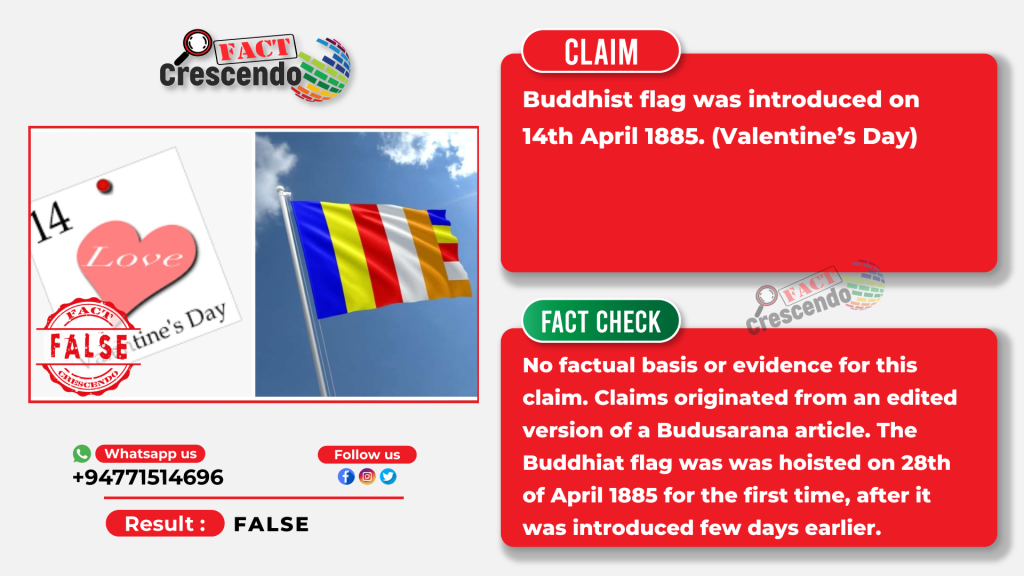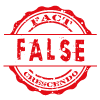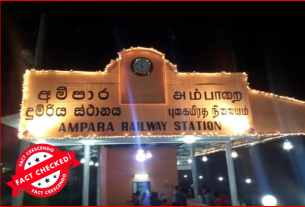
Everyone knows February 14 is Lovers` Day. However, social media posts went viral among Sri Lanka users, stating that the Buddhist Flag was also introduced on 14th February way back in 1885. Hence, these posts highlighted how the Buddhist communities worldwide should give significance to February 14. Factcrescendo Team looked at the facts behind these claims, which are shared every year, in and around Valentine’s Day.
Social Media Posts
Facebook posts suggested that the Buddhist flag was also introduced to the world on February 14, which is more famous for Valentine’s Day.

These claims were widely shared among Sri Lankan audiences.
Fact Check
When we did a keyword search, we discovered that the related content was published in the Sunday Observer newspaper in February 2020.
The newspaper report says,
The Buddhist Flag first hoisted in 1885 in Sri Lanka, is a symbol of faith and peace used worldwide to represent the Buddhist faith.
The credit for designing the flag goes to Henry Steele Olcott, a retired American Army Colonel who came to Sri Lanka in May 1880. It was unveiled on February 14, 1885.
Olcott embraced Buddhism and joined the Buddhist revivalist movement, and pioneered Buddhist education. He initiated the establishment of almost 400 Buddhist schools and colleges in Sri Lanka. Ananda, Nalanda, Mahinda, and Dharmaraja stand as monuments to his pioneering efforts.
In 1884, the Buddhists succeeded in getting the British rulers to declare Vesak Poya Day as a Public Holiday from May 1885.
However, there is no credible source related to this newspaper.
Since we could not find any historical sources that claimed that the Buddhist flag was introduced on February 14, we directed our attention to Sinhala sources.
We found out that the website “shrawaka” stated that the Buddhist flag was introduced on February 14. The below Sharwaka article was published in 2018.

From further investigation, we found out that the Sharwaka article is identical to an article published in “Budusarana” in 2010, excluding the sentence of the February 14 story. It’s seen that February 14 is a newly added part of the Sharwaka article. Related Budusarana articles can be read here. Archived.
More on this can be read on our Sinhala language analysis here on the same topic.
Dates of Historical Significance Related to Buddhist Flag
On March 27, 1885, the British Governor of Sri Lanka, Sir Arthur Hamilton Gordon, issued a proclamation declaring Vesak Poya a public holiday. It was the culmination of a campaign by the Buddhists to get some of their lost rights back. The event called for celebrations, and the six-colour Buddhist flag flew high for the first time on that historic Vesak day in 1885.
In 1885, the idea of designing a Buddhist flag was mooted by the Colombo Committee organizing the Vesak celebrations and was hailed by Colonel Olcott, who made the following observation in his ‘Old Diary Leaves’:
“It was at this time that our Colombo colleagues had the happy thought of devising a flag which would be adopted by all Buddhist nations as the universal symbol of their faith thus serving the same purpose as that of the cross does for all Christians. It was a splendid idea, and I saw in a moment its far-reaching potentialities as an agent in that scheme of Buddhist unity. Our Colombo brothers had hit upon the original and unique idea of blending in the flag the six colours alleged to have been exhibited in the aura of the Buddha.” The Old Diary Leaves by Henry Olcott can be read here
The history behind the Vesak Day holiday and Buddhist flag story is below.
The Dutch abolished the Vesak Poya holiday in 1770, and the British ignored requests that it be restored. Following the arrival of Colonel Henry Steele Olcott in May 1880, the Buddhist revivalist movement gathered momentum. A Buddhist Defence Committee was formed on his initiative on January 28, 1884.
The committee under the presidency of Muhandiram A.P. Dharma Gunawardena met at the Vidyodaya Pirivena at Maligakanda. The other members of the committee were Don Carolis Hewavitarana (Vice President), Carolis Pujitha Gunawardena (Secretary), and H. A. Fernando (Treasurer). Colonel Olcott was appointed an honorary member.
Declaring Vesak Poya Day as a holiday was one of their demands from the government. The committee decided to celebrate this historical announcement by hoisting the Buddhist flags at the main temples in Colombo on Vesak Poya Day. Carolis Pujitha Gunawardena has been credited as the flag designer, which appeared for the first time in the Sinhalese newspaper Sarasavi Sandaresa’ on April 17, 1885. The design consisted of the six colours ‘nila’ (sapphire blue), ‘pita’ (golden yellow), ‘lohita’ (crimson), ‘odata’ (white), ‘manjesta’ (scarlet), and ‘prabhashvara’ (mixture of the five). More Details about this can be read here. Archived.
The flag was inaugurally hoisted at Kotahaena, Deepaduththaramaya temple, on April 28, 1885.It was a Vesak Poya Day.Details about it can be read here here and here. Archived & Archived.
Follow us and stay up to date with our latest fact checks.
Facebook | Twitter |Instagram | Google News | TikTok
Conclusion
According to our investigation, we were able to find out that the claims, which say February 14, 1885, was the day the Buddhist flag was introduced, have no factual basis or proper evidence. In true speaking, the flag was introduced to the public on April 17 via Sarasawi Sandaresa newspaper, and on April 28, 1885, the flag was first hoisted at Deepaduththaramaya, Kotahena.

Title:Buddhist Flag Introduced to the World on February 14? Find out the Facts ….
Fact Check By: Kalana KrishanthaResult: False





